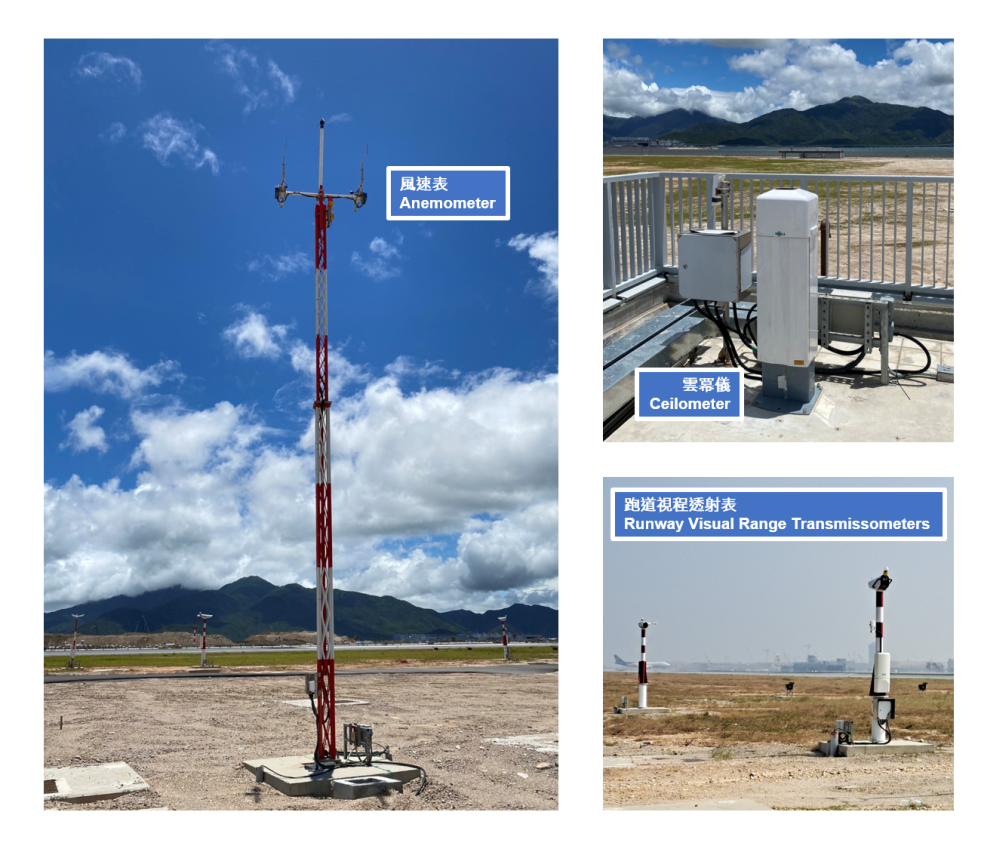Search for Airport Meteorological Equipment
Search for Airport Meteorological Equipment
CHENG Chung-choi Otto
January 2025
During festivals, one could see many passengers preparing to depart from the Hong Kong International Airport. This is also a time when no one wants to encounter bad weather, as being unable to fly is everyone’s least desired scenario. Pilots will try their best to avoid bad weather while in the air, but the weather conditions at the departure and destination airports are unavoidable. What kind of meteorological information related to the airport runway can assist pilots in assessing whether the weather conditions are suitable for flying? What is the role of the Hong Kong Observatory?
The International Civil Aviation Organization (ICAO) has established core standards and recommended practices for meteorological service for international air navigation in Annex 3 to the Convention on International Civil Aviation. As Hong Kong’s meteorological authority, the Hong Kong Observatory has established the Airport Meteorological Office (AMO) in accordance with the Convention’s requirements to provide round-the-clock meteorological observation and forecast services for the Hong Kong International Airport, as well as meteorological services required for international air navigation for the Hong Kong Flight Information Region.
In accordance with ICAO’s specifications and recommendations for meteorological observing systems, the Hong Kong Observatory has established the Airport Meteorological Observing System (AMOS) to monitor the weather conditions at the airport runways and nearby areas. The most relevant meteorological instruments for aircraft take-offs and landings are the anemometers[1] and runway visual range transmissometers[2] located beside the runways, and the ceilometers[3] at both ends of the runways. These instruments provide wind direction, wind speed, visibility and cloud base height information necessary for aircraft take-offs and landings, in compliance with the requirements for meteorological observation and reporting by the ICAO. Combined with other weather stations near the airport and services provided by the AMO, the Observatory provides the necessary meteorological information and services to ensure air safety for the aviation community.
In response to the construction of the Three-Runway System at the Hong Kong International Airport, the Observatory has installed instruments for the newly constructed and reconfigured runways, including the aforementioned anemometers, runway visual range transmissometers and ceilometers.

Figure 1 Some of the meteorological instruments built near runway for the Three Runway System.
If you have the opportunity to take off or land on the new or reconfigured runway, you may want to take a look at the meteorological instruments next to the runway. They are vital to the safety of air navigation!